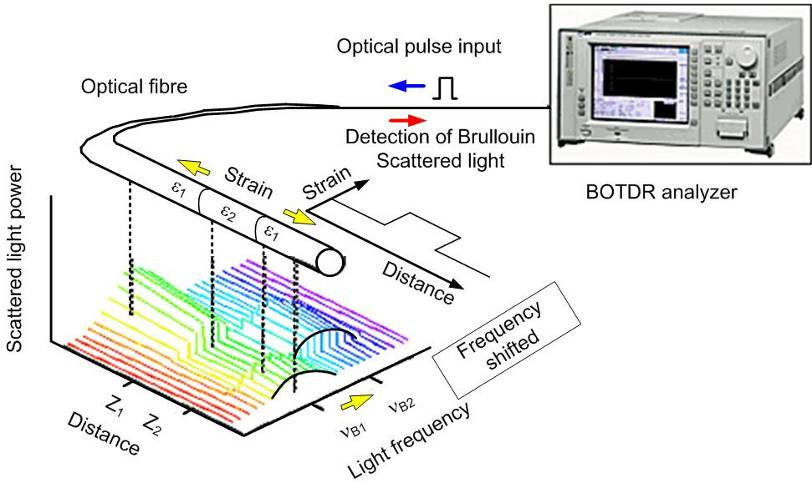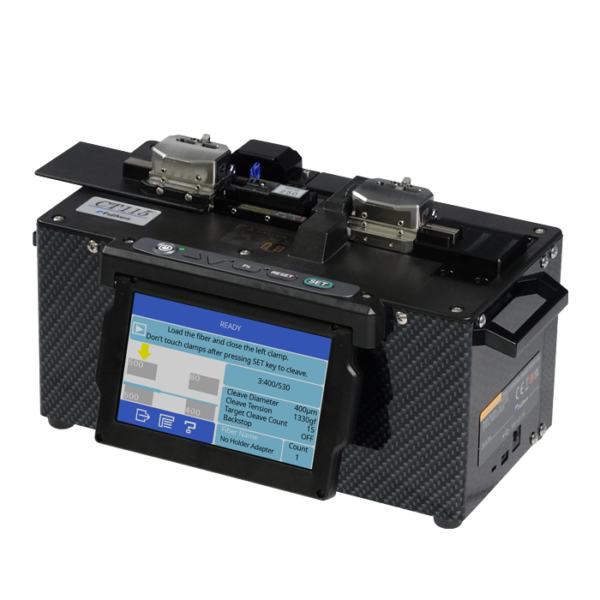Choosing the Right Optical Fibre Diameter Analyser for High Precision
Choosing the Right Optical Fibre Diameter Analyser for High Precision
Blog Article
Optimize Your Fiber Optic Performance: Recognizing Optical Fibre Size Analyser Technology
The efficiency of fiber optic systems is critically affected by the precision of their diameter, an element typically neglected in the search of optimum signal honesty. Recognizing the modern technology behind optical fiber size analysers discloses the complex balance in between measurement precision and production quality.
Relevance of Optical Fibre Size
The size of optical fiber plays a vital duty in figuring out the efficiency and efficiency of communication systems. It affects several essential criteria, consisting of the setting of light propagation, attenuation, and data transfer ability. Larger sizes typically enable numerous light modes, facilitating greater information transmission rates. Conversely, smaller sizes tend to sustain less modes, which can boost signal clarity and decrease crosstalk.

Additionally, comprehending the diameter's implications can bring about set you back financial savings by minimizing the requirement for signal amplification and repeaters in extensive networks (optical fibre diameter analyser). To conclude, the importance of optical fiber size can not be overemphasized, as it straight affects the total effectiveness and integrity of modern-day communication systems

Just How Diameter Affects Signal Quality
Signal quality in optical fibre systems pivots considerably on the diameter of the fiber. The diameter influences a number of essential specifications, consisting of depletion, data transfer, and modal diffusion. A smaller sized size can bring about higher depletion prices, resulting in signal loss as light travels through the fiber. This depletion can jeopardize the stability of the transmitted data, resulting in a decrease in signal high quality, specifically over lengthy ranges.
Alternatively, bigger sizes normally permit enhanced light capture and lowered modal dispersion, improving signal clarity. In multimode fibers, a bigger core diameter can support numerous light settings, yet it may additionally present intermodal dispersion, which can break down signal quality. Consequently, choosing the optimal fibre size is critical for accomplishing the preferred efficiency in specific applications.
Moreover, the interaction in between the fiber diameter and the wavelength of the light used plays a crucial duty in identifying the efficient transmission range and general signal integrity. Comprehending how fibre size influences signal high quality is necessary for network designers and designers aiming to maximize optical fiber systems for trusted, high-speed data transmission.
Review of Diameter Analyser Modern Technology
In many optical fibre production procedures, exact measurement of fibre size is important for making certain consistent efficiency and top quality (optical fibre diameter analyser). Diameter analysers are advanced tools made to evaluate the physical measurements of optical fibers with high precision. They utilize sophisticated optical and laser modern technologies to measure the diameter, ovality, and concentricity of the fiber, hence providing vital information for quality control
These analysers can operate in-line during the production procedure or as component of off-line screening protocols. In-line systems enable real-time tracking, permitting manufacturers to change criteria immediately, thus preserving optimal manufacturing problems. Off-line analysers, on the various other hand, provide comprehensive assessments of batches, making certain that any discrepancies from specified tolerances are identified and dealt with.
Diameter analysers significantly add to the reduction of flaws in optical fibres, improving overall product dependability. By consistently measuring key criteria, these modern technologies facilitate conformity with industry criteria and requirements. As the demand for high-performance optical fibres continues to climb, the duty of diameter analysers becomes increasingly essential in attaining the desired quality and efficiency standards in fiber optic systems.
Trick Functions of Fiber Size Analysers
Although various designs of fiber diameter analysers exist, they commonly share numerous key functions that boost their functionality and reliability. Among one of the most substantial functions is high-resolution dimension abilities, which ensure specific size readings, crucial for keeping top quality control in fibre manufacturing. Furthermore, lots of click over here now analysers integrate advanced optical sensors created to identify minute variants in fiber size, thus supplying vital information for process optimization.
An additional essential attribute is real-time tracking, permitting operators to obtain immediate comments on fiber diameter throughout the production procedure (optical fibre diameter analyser). This capability facilitates rapid modifications and reduces the probability of defects. Numerous analysers also come geared up with straightforward interfaces, allowing drivers to easily navigate via setups and information outcomes
Moreover, robust data storage space and analysis functionalities are vital for tracking historical performance patterns and making sure compliance with market requirements. These features jointly contribute to the effectiveness of fibre size analysers in maximizing fibre optic performance.
Ideal Practices for Fibre Optimization

First, routine calibration of optical fibre size analysers is necessary. This makes sure exact dimensions and minimizes prospective discrepancies that can affect efficiency. Next off, keeping a clean functioning atmosphere is vital; dirt and impurities can result in indicate degradation.
In addition, it is essential to pick fibres that satisfy specific application needs. This includes evaluating aspects such as attenuation, data transfer, and environmental conditions. Correct setup techniques ought Web Site to also be stuck to, consisting of staying clear of sharp bends and excessive tension, which can compromise fibre integrity.
In addition, employing innovative tracking systems can assist in real-time performance evaluations, making it possible for prompt identification of issues. Normal screening and maintenance need to be performed to make sure that fibres continue to be within ideal functional criteria.
Last try this out but not least, training employees on the most up to date fiber optimization modern technologies and approaches will improve their capacity to implement effective methods. By adhering to these best methods, companies can significantly improve the performance and life expectancy of their optical fibre systems, ensuring effective interaction and data transfer.
Conclusion
To conclude, the combination of optical fibre diameter analyser innovation is vital for optimizing fiber optic efficiency. By making sure precise measurements of fiber dimensions, these analysers significantly boost signal top quality and lower losses throughout information transmission. Regular calibration and maintenance of the analysers are critical to copyright optimum efficiency and conformity with industry standards. Ultimately, the application of this innovation assists in enhanced data transmission prices and enhances signal integrity, adding to the total performance of fiber optic systems.
Signal top quality in optical fiber systems pivots considerably on the size of the fibre.In numerous optical fibre manufacturing processes, precise dimension of fibre diameter is vital for guaranteeing regular efficiency and high quality. As the need for high-performance optical fibres proceeds to climb, the role of size analysers ends up being increasingly crucial in achieving the wanted quality and efficiency criteria in fibre optic systems.
These attributes collectively add to the efficacy of fibre size analysers in optimizing fiber optic efficiency.
In final thought, the assimilation of optical fibre diameter analyser technology is vital for optimizing fibre optic efficiency.
Report this page